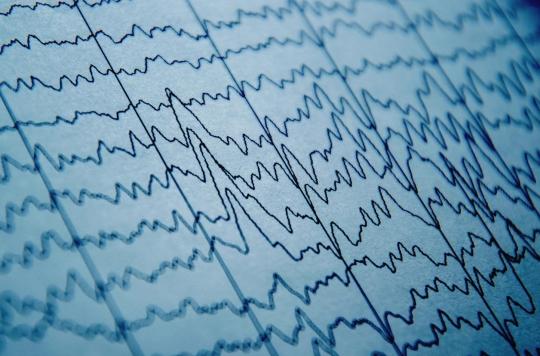For the first time, researchers have been able to observe electrical activity in brains created in the laboratory. This was similar to that recorded in premature babies.

This is likely to cause many bioethical concerns. For the first time, researchers have succeeded in creating mini-brains in the laboratory showing electrical activity close to that of a human. Specifically of a premature human baby. The results, which had already been presented at a conference a few months ago, appeared on August 29 in the journal Cell Press. While this discovery makes many scientists uncomfortable, it could open up many possibilities for studying the early development of brain disorders.
Here, researchers grew lab-grown brains, called organoids, from human pluripotent stem cells capable of differentiating into many different cell types. They pushed them to develop into cells of the cerebral cortex, responsible for memory, cognition and even sensory processing. After two months of culture, they realized that electrical activity had appeared. After six months, this signal was “constant” and very energetic. Brain activity was not as organized as that of an adult but showed common characteristics with that of premature infants.
“The level of neural activity we observe is unprecedented in vitro,” says neuroscientist Alysson Muotri of theUniversity of California San Diego (United States) at the origin of the study. The researcher has been developing organoids for years, but this is the first time that he and his team have observed brain activity of this kind.
A step in understanding brain development?
“Although network activity from organoids does not exhibit all of the temporal complexity seen in adults, the pattern of alternating periods of rest and synchronized network events is similar to electrophysiological signatures present in electroencephalography (EEG ) of premature infants,” write the researchers.
Thus, if the organoids are not as developed as human brains (no brain waves comparable to that of a real brain have been recorded), they could represent a stage in the understanding of brain development. Ultimately, they could therefore be used in the study of a large number of diseases whose mechanisms remain relatively unknown, such as autism, Alzheimer’s or epilepsy.
Results that raise serious concerns
“Although we do not claim functional equivalence between the organoids and a complete neonatal cortex, the current results represent the first step towards an in vitro model that captures some of the complex spatio-temporal oscillatory dynamics of the human brain,” conclude scientists who want to further develop their “mini brains” to see if they continue to mature.
While this research is impressive, it worries many scientists who fear the development of consciousness in the laboratory. Their fear is to get a cerebral oragnoid to imagine itself living in the same way as a human being. “The closer they get to the premature child, the more they should worry”, commented in particular Christoph Koch, neuroscientist at the Allen Institute for Brain Science in Seattle (United States), with the review Nature in November 2018.
But since organoids were engineered to have certain brain deficiencies, researchers aren’t worried yet. However, if some begin to show signs of awareness, they will consider stopping the project, they say, in the hope of allaying anxieties.
.















